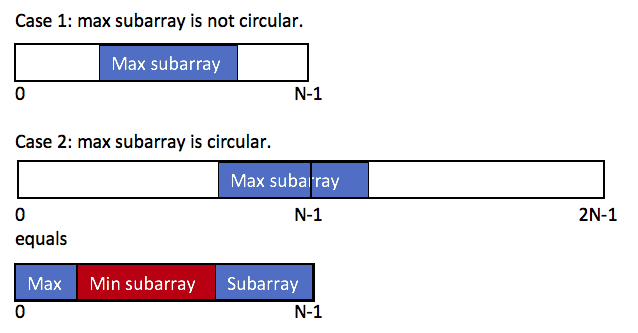- categories: Code, Interview Question, leetcode, Medium
- source: https://leetcode.com/problems/maximum-sum-circular-subarray
- topics: Kadane’s Algorithm, Array
Description
Given a circular integer array nums of length n, return the maximum possible sum of a non-empty subarray of nums.
A circular array means the end of the array connects to the beginning of the array. Formally, the next element of nums[i] is nums[(i + 1) % n] and the previous element of nums[i] is nums[(i - 1 + n) % n].
A subarray may only include each element of the fixed buffer nums at most once. Formally, for a subarray nums[i], nums[i + 1], ..., nums[j], there does not exist i <= k1, k2 <= j with k1 % n == k2 % n.
Idea
Use Kadane’s algorithm. Find total sum, max and min sub arrays in one iteration, then take the max of max subarray and total - min sub array

Code
class Solution:
def maxSubarraySumCircular(self, nums: List[int]) -> int:
current_sum, current_min, total = 0, 0, 0
best_sum, best_min = float('-inf'), float('inf')
for a in nums:
current_sum = max(a, current_sum + a)
best_sum = max(current_sum, best_sum)
current_min = min(a, current_min + a)
best_min = min(best_min, current_min)
total += a
if total != best_min:
best_sum = max(best_sum, total - best_min)
return best_sum